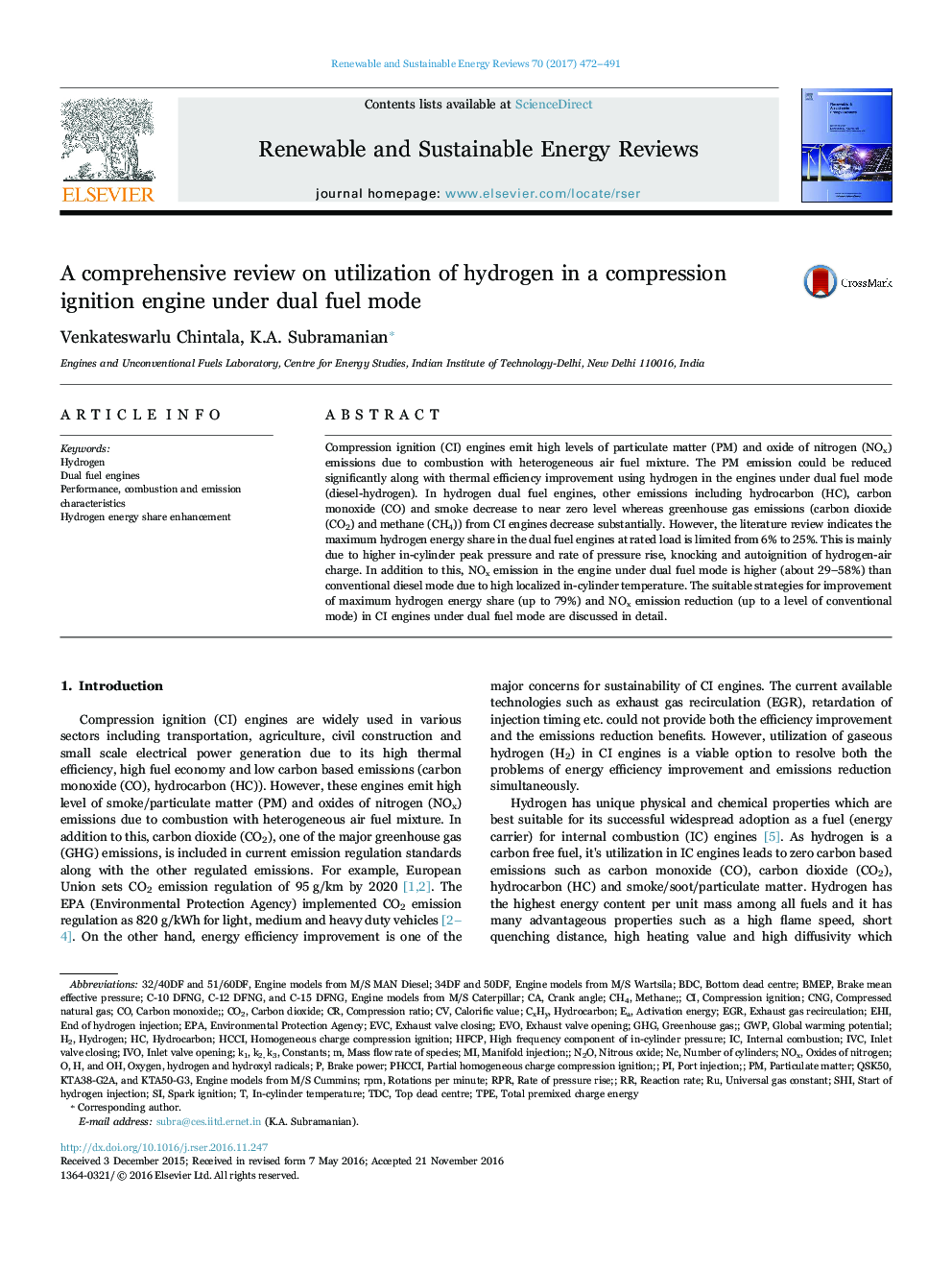| Article ID | Journal | Published Year | Pages | File Type |
|---|---|---|---|---|
| 5483241 | Renewable and Sustainable Energy Reviews | 2017 | 20 Pages |
Abstract
Compression ignition (CI) engines emit high levels of particulate matter (PM) and oxide of nitrogen (NOx) emissions due to combustion with heterogeneous air fuel mixture. The PM emission could be reduced significantly along with thermal efficiency improvement using hydrogen in the engines under dual fuel mode (diesel-hydrogen). In hydrogen dual fuel engines, other emissions including hydrocarbon (HC), carbon monoxide (CO) and smoke decrease to near zero level whereas greenhouse gas emissions (carbon dioxide (CO2) and methane (CH4)) from CI engines decrease substantially. However, the literature review indicates the maximum hydrogen energy share in the dual fuel engines at rated load is limited from 6% to 25%. This is mainly due to higher in-cylinder peak pressure and rate of pressure rise, knocking and autoignition of hydrogen-air charge. In addition to this, NOx emission in the engine under dual fuel mode is higher (about 29-58%) than conventional diesel mode due to high localized in-cylinder temperature. The suitable strategies for improvement of maximum hydrogen energy share (up to 79%) and NOx emission reduction (up to a level of conventional mode) in CI engines under dual fuel mode are discussed in detail.
Keywords
EPABMEPGHGRPMN2OTPEHCCITDCCH4GWPEHIIVCBDCRPREVCEGRCNGInlet valve openingIVONOxEnvironmental Protection Agencyinternal combustioncompression ignitionActivation energyEvoNitrous oxideOxides of nitrogenExhaust valve closingbrake mean effective pressurePort injectionUniversal gas constantspark ignitionExhaust valve openingDual fuel enginesCarbon dioxideparticulate matterCrank AngleHomogeneous Charge Compression IgnitionShiBrake powerMethaneTop dead centreBottom Dead CentreCalorific valuecarbon monoxideRate of pressure riseReaction rateCompression ratioHydrogenhydrocarbonglobal warming potentialrotations per minuteCO2compressed natural gasGreenhouse gasexhaust gas recirculation
Related Topics
Physical Sciences and Engineering
Energy
Renewable Energy, Sustainability and the Environment
Authors
Venkateswarlu Chintala, K.A. Subramanian,
